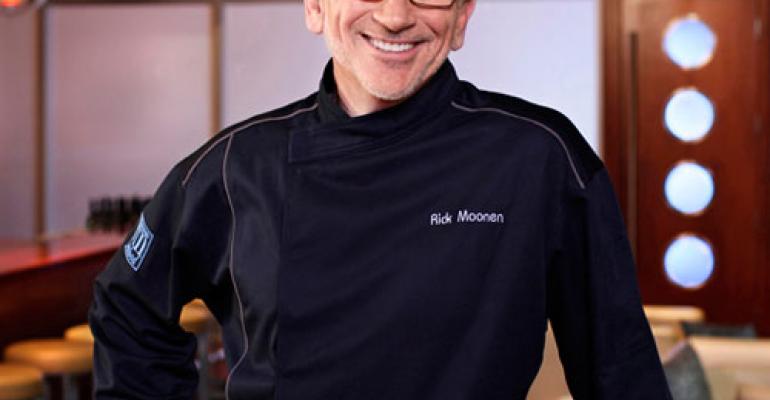Rick Moonen recently caught the TV viewing world’s attention by being a runner-up on Bravo’s "Top Chef Masters," but he has been delighting his customers with his seafood dishes for years, while also beating the drum for sustainable fisheries.
Currently the chef and owner of Rick Moonen’s RM Seafood at the Hotel at Mandalay Bay in Las Vegas, he first started speaking in defense of sea life in the late 1990s, when he saw the quality and availability of Chilean sea bass go down while the price was going up. He correctly concluded that too many of these large, slow-growing fish were being caught, and too frequently, to give them a chance to rebuild their populations.
That lesson has stuck with Moonen, and in the first part of a two-part interview, he explains his “Big Five” theory of how we eat fish.
Tell us about your “Big Five” theory?
There are hundreds of thousands of edible biomass species in the ocean. We tend, because of confusion or level of comfort, to settle into eating just five of them. What those five are depends on the region. Tuna and salmon are pretty much on everyone’s list, the others could be halibut, grouper, cod, snapper … That mentality needs somehow to be broken so we can relieve the pressure on those big five.
I mean, there’s tuna on every single menu, and there are maybe five major species of tuna that people consume. Bluefin is on the brink of extinction, big-eye is right behind it. Yellow fin is fine or not, depending on the quarterly report. The other two are albacore and skipjack, which are mostly canned.
What’s keeping us from using other species of fish?
Chefs are happy to experiment with different kinds of fish, but the pump needs to be primed somehow. If you’re a seafood distributor, are you going to stock product that’s not going to move in 48 hours? Of course not: We’re talking about the most perishable items out there. The same is true of fisherman. They’re not going to bring in product that they can’t sell.
It’s very frustrating to me. Chefs need to get [unusual seafood] in their hands, get creative with it and then get guests to order it. I think media can help to celebrate these species of fish.
What types of fish do you recommend?
For years, everyone, including myself, tried to serve fish that was lower on the food chain — sardines, anchovies, mackerel — oily fish that are high in Omega-3 fatty acids, and because they’re low on the food chain, they don’t have high concentrations of mercury or dioxins or PCBs or whatever your concern is.
What outside-the-box fish are you working with now?
Right now I have Walu on the menu. It’s a meaty Hawaiian fish. I call it the methadone program for people addicted to Chilean sea bass. But it’s not about a specific fish. If you focus on one fish then that one will be overexploited. It’s about diversity — mixing up your diet when it comes to ocean sources. That will give some relief to the big five. We just need to be smarter. People need to be more comfortable stepping out of their big five zone.
In part two of the interview Thursday, Moonen shares his views on Gulf of Mexico seafood.
Contact Bret Thorn at [email protected].

